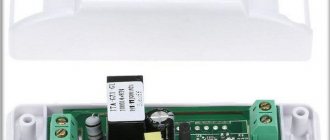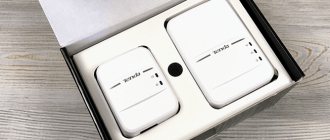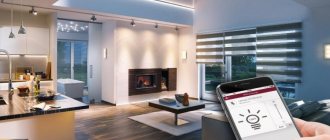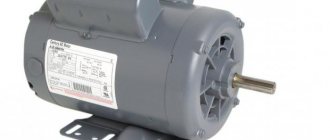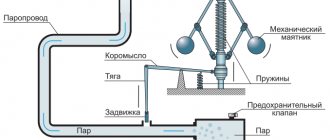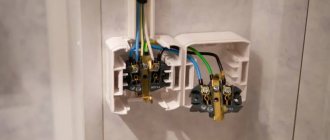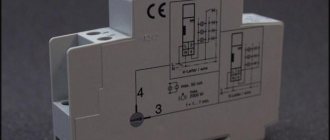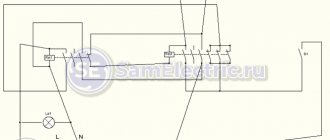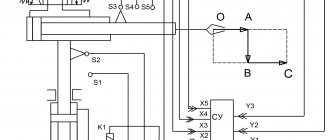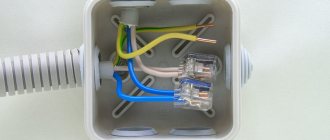The popularity of “Smart home” is growing every day. The development of mobile and computer technologies, the availability of accessible wireless networks - all this makes it possible to control the smart home system from a distance. To do this, you need to be connected to the World Wide Web and have remote access via a smartphone or computer. This type of smart home management is especially relevant for property owners who always want to be aware of events.
The process of connecting the smart home system
Remote control via the Internet provides the ability to:
- make sure that household appliances have been turned off;
- find out about uninvited guests visiting the territory, about gas leaks;
- monitor the proper operation of heating and water supply systems;
- open and close curtains, blinds, windows;
- prepare for returning home, for example, turn on the air conditioners or coffee machine.
The control center is configured through special equipment that connects the owner’s gadget to special sensors and modules of household appliances. The software product is synchronized with the “control master”, thereby obtaining the rights to remotely change the parameters of the smart home.
An intelligent building is connected to a control unit at a distance not only when using algorithms that were developed by programmers. It is also possible to combine all devices in one cloud storage. Through it, direct remote control of gates and other household components occurs.
The principle of operation of any module
The GSM module receives radio frequency waves from the SIM card of a mobile device of any telecom operator at a frequency of 850/900/1800/1900 MHz. Then it processes the data with controllers. Executes the programmed script:
- notify about a force majeure situation;
- activate connected devices;
- transmit information synchronously/asynchronously and in batch form via SMS, in graphic format and by voice.
As a result, the equipment operates under user-specified conditions, automates processes, and saves owners time and money.
Programming the smart home system
A smart home control system via the World Wide Web involves the use of a client application. To create it, you will need to think through all the schemes and features of the functioning of engineering subsystems. After this, programmers begin to develop a software product. As a result, the client - the owner of an apartment or house - receives a utility for remote control of air conditioning, electrical appliances, and lights. The owner of the program will be able to set or change the operating parameters of certain elements with just one click.
There is also an alternative method of monitoring equipment in a smart home - GSM control. This system is characterized by reliability, because its operation requires the use of SIM card slots in the smart room equipment. Such devices are subsequently controlled by commands via digital code in messages received from the mobile phone.
Supported devices
- Smart TV 2011 models LED D7000 and later, PDP D8000 and later. 2012 models LED ES7500 and later, PDP E8000 and later. 2013 Models LED F4500 and later (except F9000 and later), PDP F5500 and later. 2014 models H4500, H5500 and later (except H6003/H6103/H6153/H6201/H6203). 2015 models J5500 and later (except J6203). 2016 Models K4300, K5300 and later. ※ Supported TV models vary by region.
- Mobile devices Android OS 4.1 and later. iOS 7.0 and later
- Computers Windows 7, 8, 8.1, and 10 (32-bit and 64-bit) Intel Pentium CPU 1.8 GHz or faster (Intel Core 2 Duo 2.0 GHz or faster recommended) 2 GB RAM ( recommended) VGA adapter supporting 1024 x 768 resolution, 32-bit or higher
Copyright © 1995-2018 SAMSUNG. All rights reserved.
This application allows you to view multimedia content from your mobile device or computer on your Samsung Smart TV.
The Samsung Smart View app allows you to easily view content from your mobile device and computer on your Samsung Smart TV, and control your TV using your mobile device.
Download version for mobile devices
※ Search for Smart View app directly in Samsung Galaxy Apps Store.
Download version for Windows
Why do you need to control your heating system remotely?
Today there is a great opportunity to automate the heating system. This will allow you to manage and control autonomous heating, which will relieve property owners from worries and unnecessary hassle associated with setting the optimal temperature regime and excessive heat consumption. Smart home control via the Internet allows you to connect thermostats to the system. You can make changes, for example, set a comfortable temperature for the return of family members, or turn off the regulators while you are away, using your mobile phone, which is regularly at hand.
Benefits of using remote heating control systems
The advantages of an intelligent home, especially heating control via the Internet, include:
- creation of additional comfortable conditions for stay and living in the premises;
- savings on heating bills. The thermostat in a smart home can be set to economy mode when there are no residents;
- reducing the round-the-clock load on devices, which increases their service life;
- Autonomous heating diagnostics can be launched at any time;
- the ability to set different temperature conditions for each room;
- reducing the overall cost of maintaining the entire house or apartment.
What are GSM modules for heating boilers?
A GSM module is a small device (controller), which essentially represents an alternative to boiler controls and automation. It receives a signal via cellular communication and transmits a command to the boiler or in the opposite direction: it informs about the status and operating parameters of the boiler and the heating system as a whole.
Why is it needed and how is it used
Typically, the primary purpose of purchasing a device is to save money and increase the operating comfort of the heating system. Any GSM module allows:
- turn the heating boiler on or off completely;
- control the temperature, for example, lowering the temperature during absence in order to significantly save money and restoring a comfortable mode even before arriving at home;
- manage DHW circuit temperature parameters;
- External temperature sensors included with almost any modern module allow you to more accurately maintain the temperature by measuring the air temperature in the room, rather than the temperature of the coolant. It is also possible to organize weather-dependent operation of the boiler.
But no less important, in our opinion, and indeed a higher priority for some buyers, is safety. The GSM module is capable of notifying:
- about reaching the lower or upper specified temperature limit;
- about turning off the heating boiler due to lack of electricity or gas supply, problems with the removal of combustion products, automation errors, depressurization of the system, etc. This is often a rather underrated feature that allows you to have peace of mind during long-term departures and, in the event of a malfunction, take timely measures to prevent freezing and damage to the heating system;
- It is possible to configure alerts about temperature and other boiler parameters at a certain frequency.
An example of an SMS report on the status of the heating system of the EctoControl module.
Notifications and control from the phone can be carried out using SMS and, depending on the functionality of a particular model: through a special application, web interface or voice commands. The GSM module can be connected to any boiler that has the ability to connect external control (having the appropriate terminals), both gas, electric, liquid and solid fuel.
Message about a malfunction of the boiler using the example of the ZONT H-1V module application.
Almost all modern models allow you to bind at least 2, but usually up to 5 or 10 numbers to the controller and report on each of the linked ones. Modern devices, due to the ability to connect other modules to them, allow you to organize even wider functionality: monitoring the level of liquid and even solid fuel (for example, pellets in an automatic feed hopper), monitoring the status of flow and carbon monoxide sensors, monitoring pressure in the circuits.
Design and principle of operation
The main element is the controller (electronic control board). It has a slot for a SIM card, without it the device will not work. Depending on the planned method of management and control, it is necessary to select the most profitable cellular operator and tariff, and constantly maintain the operation of the SIM card by topping up the account. Regardless of the method of transmitting the command, the controller receives it via cellular communication and converts it into a command for the boiler, which has priority over the operation of standard automation.
To improve communication quality, the controller can be supplemented with an antenna. To ensure uninterrupted operation during a power outage, most models are equipped with a built-in battery, so they can easily send an alert about the problem. Almost all modern models come with external temperature sensors (wired and wireless), information from which takes priority over measurements from boiler sensors.
Principles of equipment control via the Internet
Until recently, all control of a smart home took place through special panels that were placed on the walls of the room. After this, companies began to produce a remote control that has all the access to change intelligent parameters.
Innovative systems have a touch screen and also allow you to connect a smartphone, tablet or computer to control household appliances or other comfort elements. Managing windows and other devices involves two aspects: diagnostics and direct change of previously set parameters.
The functional features of monitoring allow you to obtain comprehensive information about the condition of the building at any time. The owner of an apartment or house can check the security system (whether windows and doors are locked, whether electrical appliances are turned off), turn off lights and electronic household equipment, find out the temperature in the entire room or in individual zones, and view images from cameras. Such data is stored in history, so the owner can at any time compare the indicators for previous periods with today’s.
Modern smart home control capabilities have no limitations. Any owner of the system with access can open the garage door, start, turn off heating, lighting and electronic devices. Equipment manufacturers are increasingly equipping their products with “smart” technologies, so the possibilities will only increase.
Popular models
GSM alarm Sapsan
GSM modules must be selected depending on the type of boiler equipment and the requirements for the controller.
The most famous models are:
- Xital GSM with modifications 4T, 8T and 12T.
- Sapsan Pro 6 – for any boiler equipment, connection of 10 rooms.
- Telcom 2 – only for De Dietrich, up to 5 numbers.
- Vitocom 100 – only for Viessmann, a maximum of two numbers can be connected.
- Logomatic PRO GSM – only for Buderus, maximum number of numbers – 16 pieces.
Control system "Xital"
In the market of GSM alarms for heating equipment, the undisputed leader is the Xital system.
This is a powerful, comprehensive remote control system because in many cases it covers not only heating, but also home security.
The module accumulates data on the temperature in the room, pool, pressure in the circuits, collects readings from safety sensors, and simultaneously regulates the room temperature within a given range.
GSM module for boiler Xital 4T
There are several modifications of Xital - GSM-4T, GSM-8T and GSM-12T. They differ in the number of control zones - 4, 8 and 12.
Each device has an analog temperature sensor, as well as five external digital sensors that continuously measure temperature. 30 seconds after the sensors are triggered, Xital will send a message to telephone numbers (you can configure the equipment to turn off when an alarm is triggered).
Users can register up to 10 numbers, including regular landline numbers.
Startup order
The initial launch of the system is quite simple, you just need to follow the sequence of actions:
- Insert a clean SIM card into the controller.
- Plug in the power adapter.
- Call your mobile phone to the number of the inserted SIM card.
The controller creates initial settings and templates for voice dial-up mailing lists; using Caller ID, your phone number will be entered into them. System startup is complete.
After about a minute, you can do a control check. To do this, call the controller's SIM card again. After the call is reset, you should receive a response SMS message with information about the temperature in the boiler and in the room, the state of the controller inputs, the presence of a network and the protection of the object.
The Xital package includes a battery, with which the module can continue to operate when disconnected from the electrical network. We recommend that you purchase an uninterruptible power supply for your gas boiler in advance, since the module’s battery only lasts for a short time.
Maximum operating efficiency of the entire system is ensured not only by its optimal connection diagram and the presence of automation, but also by the installation location and technical parameters of the heating batteries. In this sense, vertical heating radiators have many advantages.
Which program to choose for hydraulic calculation of a heating system?
Lighting control options
Remote turning on of the light can be done from a remote control or switch, in automatic mode or manually, with or without the ability to change the lighting characteristics, as well as on the principle of supplying a signal of certain wavelengths and receiving them. However, when looking for a lighting control system for their own home, the user first of all faces the problem of choosing between the following options:
- Remote control.
The equipment on the remote control operates in both radio wave and infrared radiation frequencies. However, the 1st option is most often used. Since the IR remote control works very limitedly - at a short distance, in a strictly specified direction and so that there is no obstacle in the path of the receiver, that is, it will no longer work behind a wall.
The light is turned on and off using the remote control Source ytimg.com
The radio remote control has much greater capabilities, as it allows:
- Integrate the control system with a PC, smartphone and other gadgets.
- Significantly expand the range limit - up to 100 m or more, and through obstacles - up to 25 m.
- Strengthen the signal with a special repeater.
The radio remote control runs on battery power. In this case, the equipment package includes a remote controller. It is mounted on the wall surface or directly into the lighting fixture.
- IR and radio wave switches.
These are switches that look similar to classic switches. There are models with both a remote control and manual ones, which allow you to turn the light on and off directly by pressing a key. The design includes a special antenna that receives the signal.
Interaction with lighting devices is carried out through special power units connected to the electrical network and lamps. During installation, the switch is placed in a suitable place where it is most comfortable to use; the blocks are installed in the distribution box or directly in the lamp.
What boilers does it work with?
Before purchasing a module, you need to find out whether the heating boiler supports the connection of such a device. Not all models have such support.
Autonomous systems with forced circulation of coolant (that is, equipped with a pump) are suitable for connecting the device. In this case, it is necessary to rework the safety system in order to prevent breakthroughs at the points where the module is connected.
Expert opinion
Grebnev Vadim Savelievich
Heating system installer
If the module has an air temperature sensor, then it can be used with other types of boilers. However, due to measuring t outside the system, it will work a little less accurately.
Features of operation in various types of boilers
The device has specific operation in different types of heating systems:
- When used in electric boilers, voltage monitoring is possible. The device can also signal a short circuit.
- When used with several boilers at the same time, the device can summarize information from them. This is relevant when used in production or in utility rooms.
- In pellet boilers using wood pellets, the module can regulate the fuel supply to the system.
